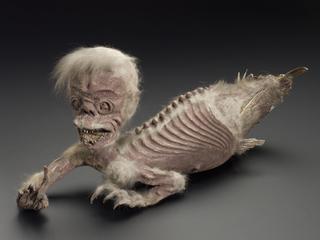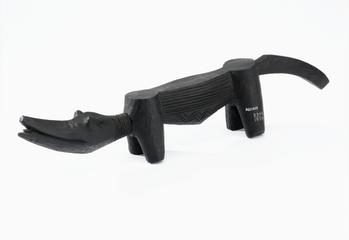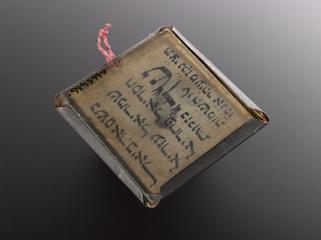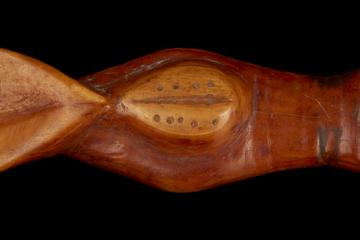






Beaded necklet for a child, worn as a protective amulet against bronchitis and collected by the English folklorist Edward Lovett in Upper Holloway, London, 1914.
This necklet, threaded with glass beads, was one of a number collected across London in 1914. It was made to be worn by a child as a protective amulet against bronchitis and was once part of the huge collection of charms, amulets and other items collected by the English folklorist Edward Lovett (1852-1933).
Lovett had been told by one of London’s Medical Inspector of Schools that children were wearing such necklaces and set out to find how widespread the practice was in the capital. He recorded each local shop where he was offered such a necklace after asking for something to cure a child with bronchitis. In all Lovett recorded examples in 27 different parts of London – this particular one came from Upper Holloway.
During his investigations he was told that such necklets were highly trusted, but should never be taken off, even when the child was being washed. Apparently, they were also often worn for life, only being removed to renew the string if needed. Their use illustrates both the persistence of folk beliefs at a time great strides were being taken in medical practice, but also evidence of the fears of parents whose children were growing up in the poorer, more unsanitary parts of London where death and disease remained very prevalent.
Details
- Category:
- Ethnography and Folk Medicine
- Collection:
- Sir Henry Wellcome's Museum Collection
- Object Number:
- A630906
- Materials:
- glass, fibre (unidentified) and complete
- credit:
- Lovett, E. (Croydon)




